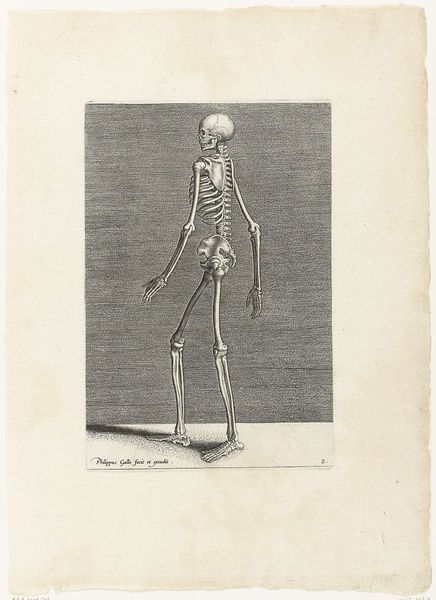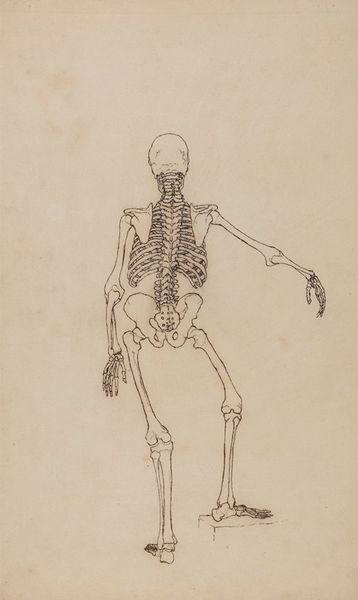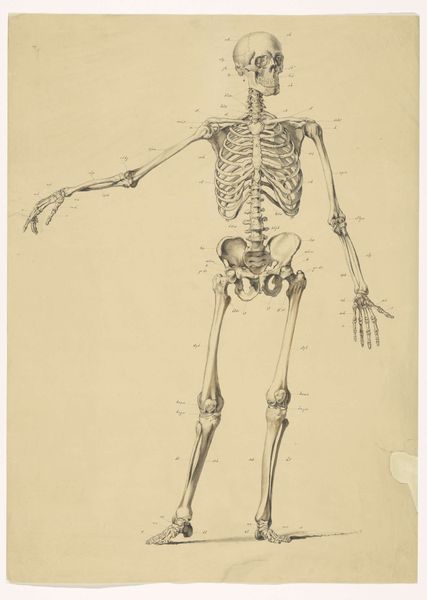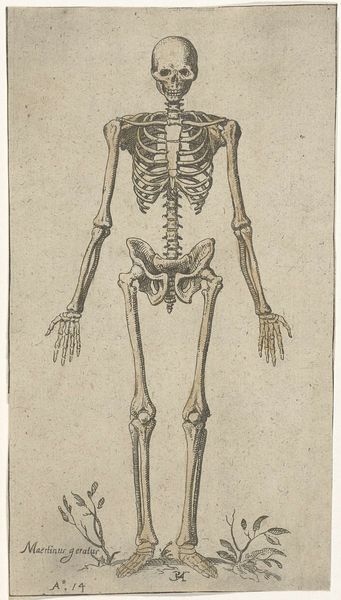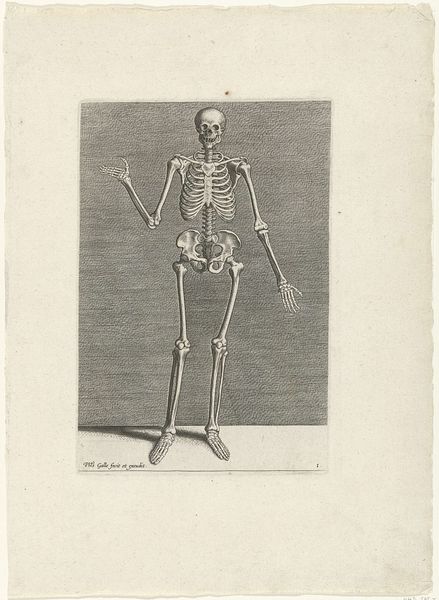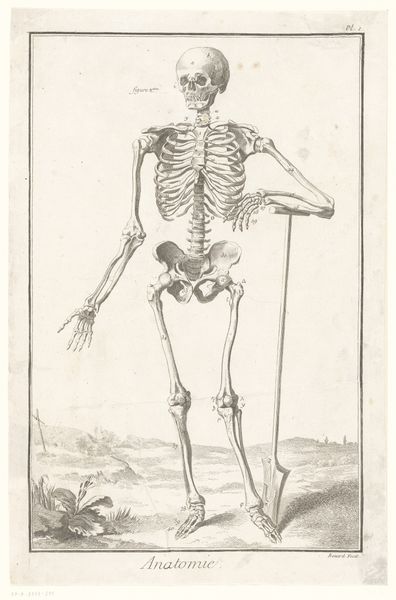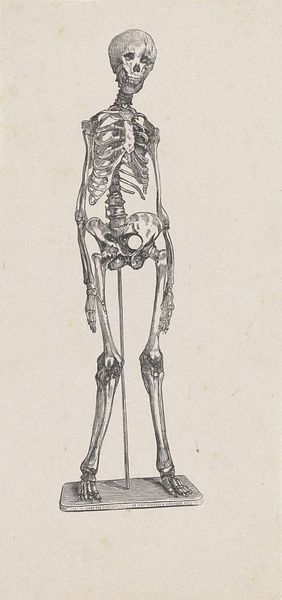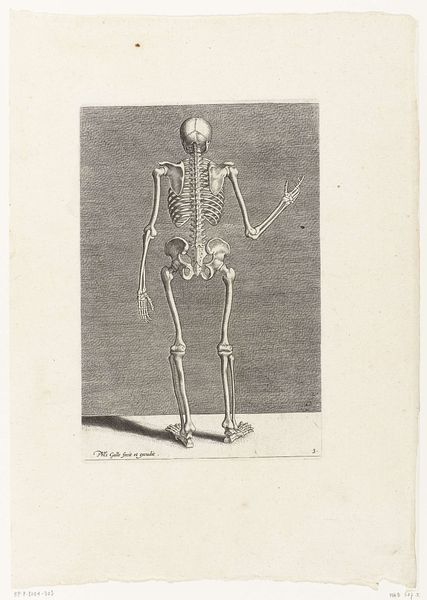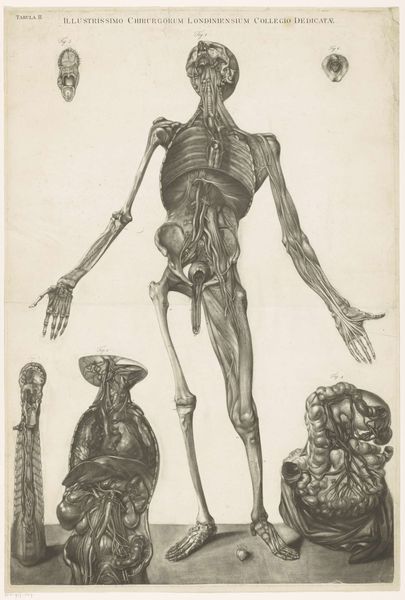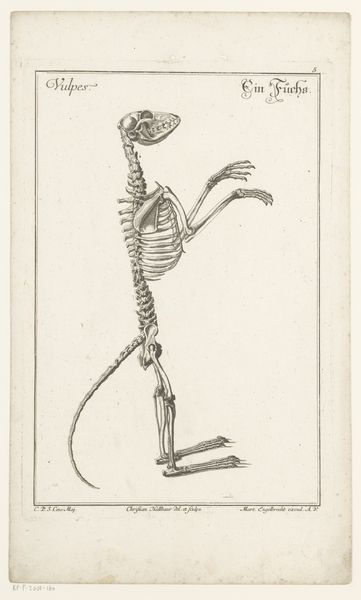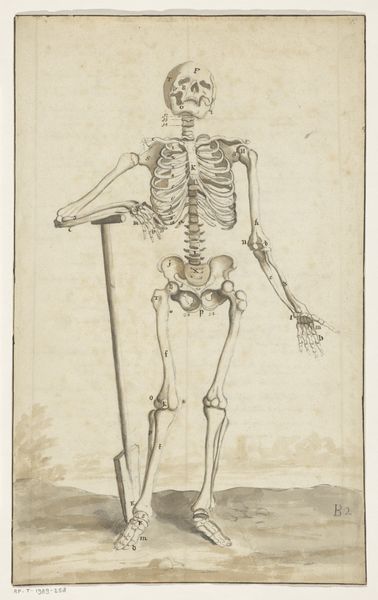
Study of the Borghese Gladiator as a Skeleton after 1812
0:00
0:00
Dimensions: 61.2 x 46.4 cm (24 1/8 x 18 1/4 in.)
Copyright: CC0 1.0
Curator: This is Philibert d'Amiens de Ranchicourt's "Study of the Borghese Gladiator as a Skeleton," a drawing that resides here at the Harvard Art Museums. Editor: It's stark, yet there's a strange beauty in its macabre anatomical accuracy, against this pale-blue ground. Curator: The Borghese Gladiator sculpture itself, a symbol of idealized masculine power, is here stripped bare. This drawing can be seen as a commentary on the fleeting nature of physical prowess, suggesting that all bodies, regardless of their strength, are subject to decay. Editor: Absolutely. It highlights the labor involved in both creating and studying the body, but in a new way. Curator: It certainly underscores the social and political dimensions of mortality, reminding us of our shared vulnerability. Editor: A potent blend of art, anatomy, and mortality, isn't it? Curator: Indeed. It brings a unique perspective to our understanding of classical ideals and our own corporeality.
Comments
No comments
Be the first to comment and join the conversation on the ultimate creative platform.
